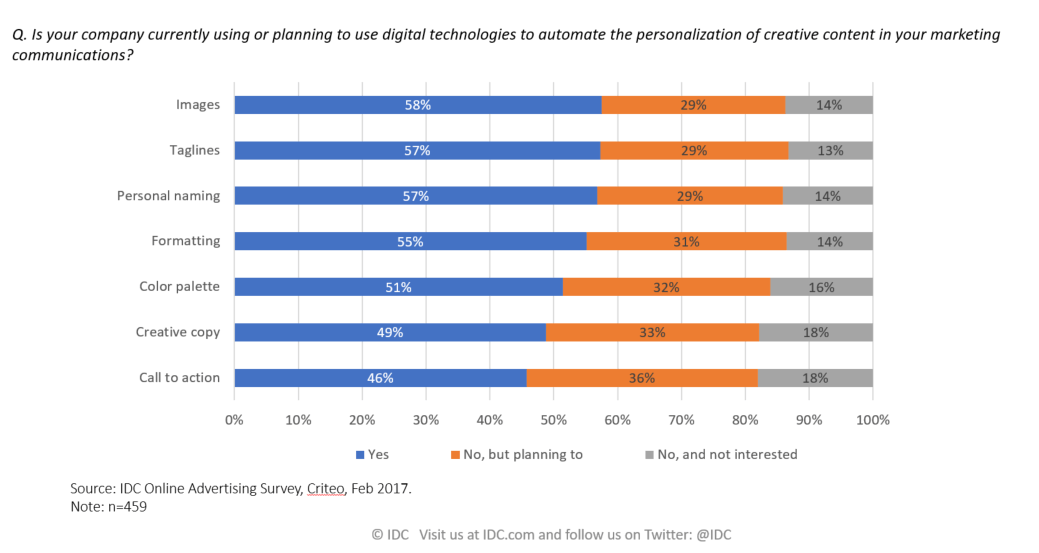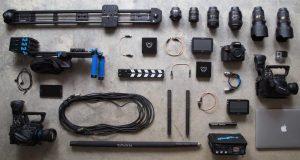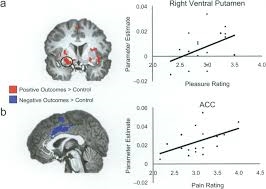Columnist Blaise Lucey discusses how marketers will need to look toward machine learning and data in 2018 to help them connect with their audiences.

In a saturated digital landscape where brand blindness is the norm and people see more offers and content in a day than they can even remember, marketers have their work cut out for them. But if there’s one common solution, it’s content so relevant that it’s impossible to ignore.
Personalization has been an agenda item for marketers for years, but it’s not easy to achieve. Sure, you can build personas and create marketing campaigns for them. But, as appealing as “Marketer Mark” and “Social Sally” can be in planning meetings, they’re still far too broad to effectively represent an individual’s journey.
We’re reaching a point where personalization at the individual level is the only way to resonate with an audience, whether that means a unique offer, a unique experience or a unique message.
In an IDC White Paper, sponsored by my employer, Criteo, and called “Can Machines be Creative? How Technology is Transforming Marketing Personalization and Relevance,” analyst Gerry Brown dug into the top ways marketers were trying to create personalized experiences.
And, in 2018, it looks like it’s going to mean asking a central question: Can machines help us connect with our audiences in meaningful ways?
Individuals, at scale
If you had a truly personalized social media strategy, you would tweet something to each and every follower. You’d create a Facebook ad for an audience of one.
Basically, you’d spend hundreds of hours for each campaign. A manual approach to personalization isn’t sustainable, which is why companies are using digital platforms to personalize marketing communications.
Adoption is across the board: Among the 459 marketing execs surveyed by IDC, 34 percent said that they are using personalization technologies to a moderate extent. Around a third (32 percent) said they’re personalizing marketing communications to a great extent, while 10 percent said they’ve completely digitized marketing communications.
Common tactics include emails related to birthdays or other personal events, communicating new products based on customer preferences, re-engaging based on individual behavior, and retargeting campaigns.
These tactics may sound familiar to most marketers. We all personalize to some extent, whether it’s in an email campaign or segmenting audiences at a granular level.
What’s interesting is that IDC believes the next step is leveraging machine learning to personalize even content and design. That means figuring out how machine learning can impact content in real time. This is a tricky process — data has to be turned into experience as soon as a user loads a page or a video ad.

The most commonly personalized element was images, with 58 percent of marketing execs automating the personalization of images in marketing communications. More than half said that their teams were personalizing taglines (57 percent), naming (57 percent), formatting (55 percent) and color palette (51 percent).
Personalized calls to action (46 percent) led to the greatest satisfaction among respondents.
The personalization tactics that many brands employ today can only go so far. That’s why ad-blocking continues to go up — if customers don’t see hyper-relevant content, they won’t even notice it. And, as audiences demand a more personalized experience on every channel, marketers will have to think about how to personalize at scale.
Getting creative with machine learning
True personalization at scale requires machine learning. As users engage with content or ads, algorithms drill down into the relevant data and customize the experience. This can help create a cohesive user journey. If someone sees a Facebook Ad and clicks it, the next touch point could be customized around that product, the color and call to action and any other relevant data point.
And, while most marketing execs are familiar with machine learning as a concept, just 14 percent are using applications for communications personalization today. IDC expects an explosion of latent interest to drive an adoption of machine learning platforms; the marketing execs believe that personalized content can lead to higher brand awareness (63 percent), website traffic (61 percent) and sales revenues (59 percent) in particular.
Currently, the majority of marketing execs use machine learning to personalize headlines and copy. In the future, there’s serious interest in using machine learning for media planning and execution, multichannel campaigns and personalized ads. Essentially, machine learning is going to go from being a point solution to a broad platform that potentially informs every aspect — tactical and creative — of marketing.
This is all coming at a time when machine learning for content has become a norm in other industries. Netflix offers users specialized genres and media selections, Spotify creates playlists for each listener, and every social network surfaces the content that will resonate most according to a user’s previous browsing behaviors.
That puts the pressure on marketers to catch up. Your audience is already used to personalized content recommendations. So when an ad or marketing campaign appears, it’s only natural that consumers don’t even notice it if it isn’t relevant. Going into 2018, it’s going to be critical to figure out how to incorporate machine learning and data not only into segmentation and targeting but into the creative process, too.
Opinions expressed in this article are those of the guest author and not necessarily Marketing Land. Staff authors are listed here.
Marketing Land – Internet Marketing News, Strategies & Tips
(68)







